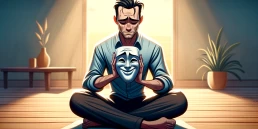How to survive a 10-day silent meditation retreat in Thailand
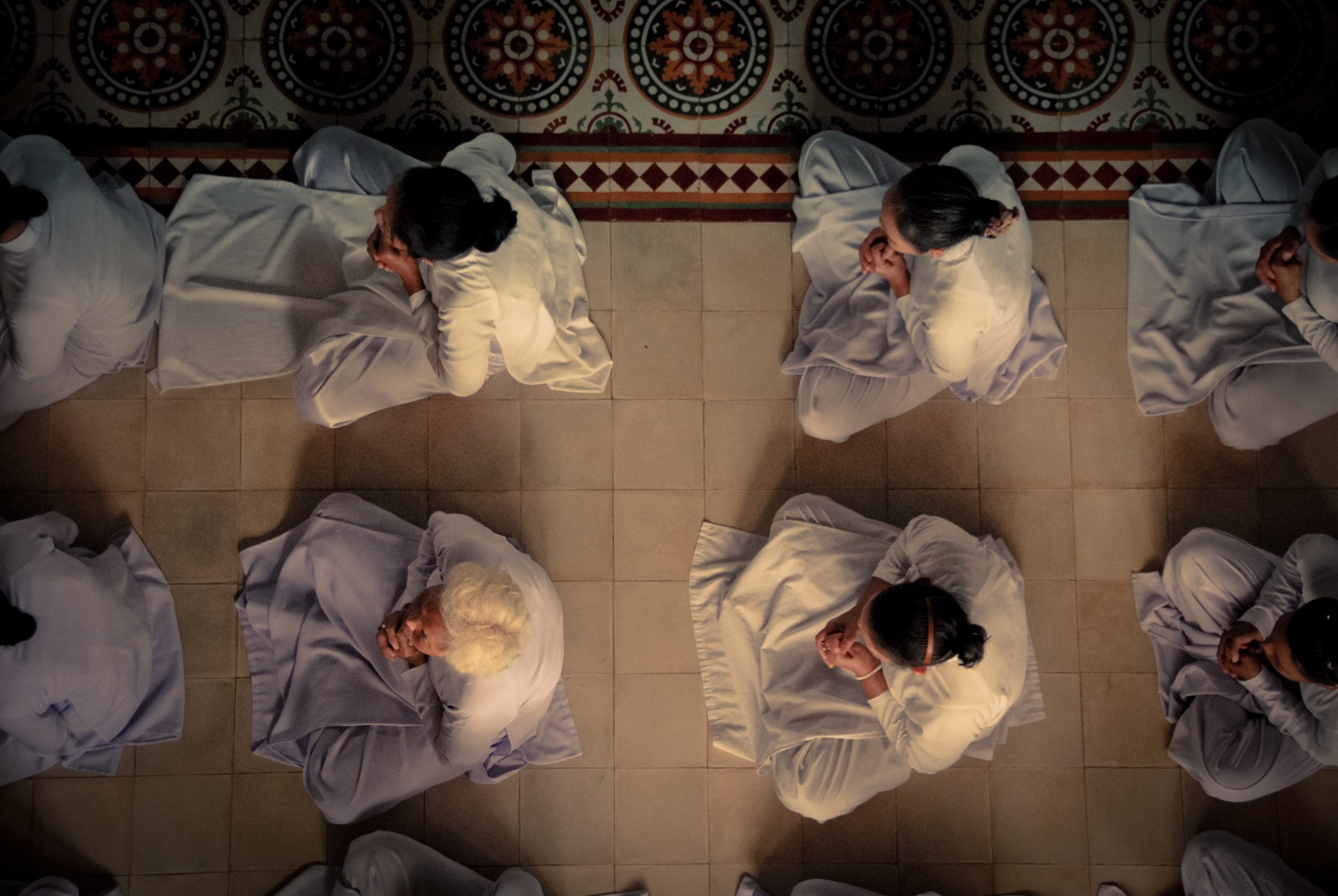
I remember when the idea first came to me.
I was sitting on my bed in my villa in Bali.
I had just completed a 10-minute guided meditation, thanks to the dulcet tones of The Honest Guys on Youtube.
I was part-way through reading The Power of Now by Eckhart Tolle.
Looking back, it was terribly cliche.
I was your stereotypical eat, pray, lover. But I was more curious than ever about exploring the limits of my mind.
The idea that came to me in that moment of mindful clarity was: I should go on a meditation retreat.
You see, I had an upcoming trip to Thailand and two weeks to kill at the tail end.
At first, I thought I would punish myself with a Muay Thai training camp.
I ended up settling on the much more peaceful, easygoing, and affordable option of a meditation retreat.
This is what I was thinking at the time:
- It’s a cheap way to kill two weeks in Thailand
- How hard can doing nothing for days on end really be?
- I enjoy silence and solitude. I’ll be fine
- What an incredible way to experience the culture
If only I had known then what I know now.
My meditation journey
It’s important for you to know that I was a total meditation noob.
I had been meditating for about three weeks for about 10 minutes a day when I decided I would go to a 10-day silent retreat.
I couldn’t sit cross-legged for the whole 10 minutes. My groin and hips hurt like hell.
But when I get into something I like to throw myself into it completely.
The retreat I chose was the Suan Mokh International Dharma Hermitage in Surat Thani, Thailand.
It had a few good reviews on TripAdvisor and quite detailed information on its website.
It’s a Buddhist retreat that teaches anapanasati (mindfulness with breathing meditation).
The retreat was founded by Buddhadasa Bhikkhu, a highly-revered monk, in 1932.
The hermitage hosts monthly 10-day retreats, starting on the first day of each month.
Registration has to be in person on the last day of the previous month.
There is no official registration cost, but they do expect a donation of 2000 Thai baht (about $60 USD).
Not bad for 10 nights’ accommodation, meals, and a potentially life-changing experience.
What you need to know
Bear in mind that this is based on my personal experience at Suan Mokkh in November, 2017.
From what I have read about other meditation retreats, particularly those in the United States, Suan Mokkh is similar, but perhaps more hard going.
So use this as a guide and a reality check. If you have any questions, please don’t hesitate to contact me.
1. Let go of expectations
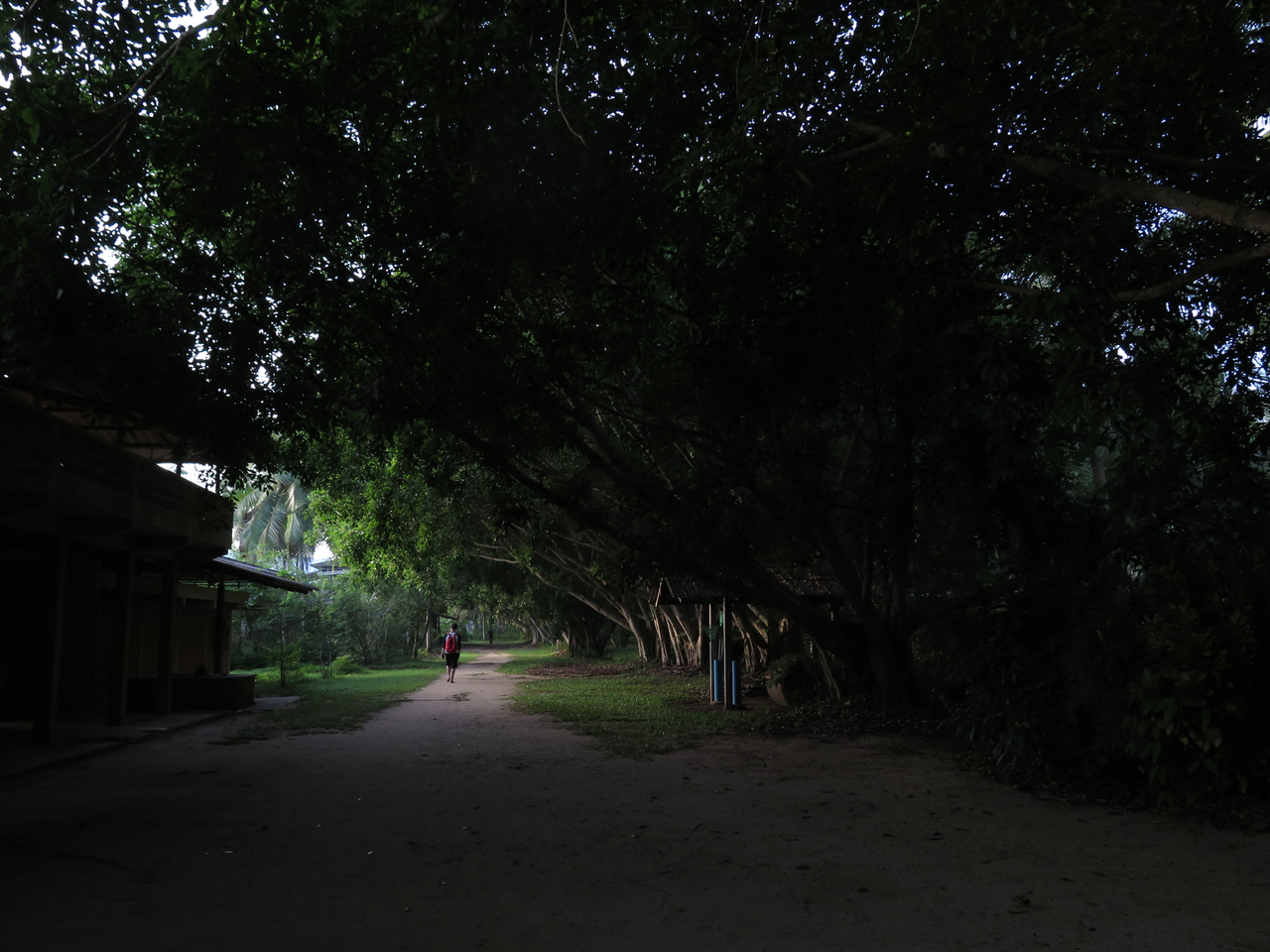
I was in a mini bus on the way to the retreat while listening to an episode of the Waking Up with Sam Harris podcast (coincidentally on the subject of Buddhism) when a petite, softly-spoken Thai woman asked if I was heading to Suan Mokkh.
I took off my headphones and told her I was.
She said she was a volunteer at the retreat and had attended many times before. She asked me what I was expecting.
I said something generic like: “I’m expecting it to be difficult, but hopefully enlightening.”
Then I asked her if she had any advice.
She told me to let go of any expectations and to take things as they come.
It was simple advice, but I reflected on it often during the retreat. It gave me strength during dark times.
Having expectations sets you up for disappointment, or surprise, pleasure, and pain. These are all things that can hit you hard on retreat, as you’ll be in a particularly fragile state.
Try and lay your expectations to one side. If this is your first retreat, you really have no idea what you’re in for. And that’s how it should be.
Let the experience unfold.
2. Arrive early
I arrived at Suan Mokkh early. Or at least I thought I did. It was about 10am.
There were already quite a few people there. Retreat participants are allowed to stay the night before at the main monastery, but I wanted to enjoy the comforts of my guest house in Surat Thani for as long as possible.
I was given information to read and forms to fill out. I was interviewed by one of the retreat leaders who smiled warmly, spoke in a spirited whisper, and told me that all I had to do was focus on my mind and breath.
“The body takes care of itself when we sleep, but we can experience this state of being when awake, too,” he said.
“Keep it simple.”
I then had to hand over my phone, laptop and books for safekeeping during the retreat. I also handed over my watch.
The main reason to arrive early is so you can choose your daily chore. Each person on retreat has to do a chore. Service to others is an important facet of Buddhism. It also helps to keep the cost of the retreat down.
By the time I came to sign up for a chore, the only one left was cleaning toilets. I had to laugh.
Arriving early also means you can take time to collect your bedding, set up your room, take your cushions and stool to the main meditation hall, meet some of the other people, and familiarize yourself with the grounds.
Arriving late means you will likely be hurried and stressed, causing you to start the retreat in a less than ideal state of mind.
3. Bring suitable clothing
Surat Thani asks participants to wear loose-fitting clothing that covers the shoulders and past the knees.
Even though it’s hot in southern Thailand, wearing singlets and shorts is a sign of disrespect and you’ll most likely be asked to cover up.
I had been traveling around Thailand for two weeks prior to the retreat and found suitable clothing for sale at almost every local street market.
If you don’t have time to visit local markets prior to the retreat, you can buy pants and tops from a small store in the dining hall for a fair price.
Clothing that covers your arms and legs also helps to thwart mosquito attacks.
Also, it’s actually really comfortable and I wish I could get away with wearing it back home in New Zealand.
4. Prepare to lose your mind
I was used to checking my phone dozens of times a day, scrolling through social media with 30 tabs open in my browser, and watching videos on YouTube or episodes of a new Netflix show before going to sleep.
My mind was constantly stimulated by technology.
Having my phone and laptop taken away from me while remaining completely silent in such a peaceful setting was like forcing a crack addict to go cold turkey.
During the first two days of the retreat, I lost control of my mind.
My mind was trying to fill the stimulation void by creating bizarre, rapid-fire movies and images and making me watch them over and over.
Some of these ‘movies’ were entire action-packed narratives featuring people and scenes that I had never seen before.
It was truly bizarre and made me realize how powerful and unhinged the mind can be.
It also made me aware of how unhealthy my relationship with technology and social media had become.
After two days of this, my mind adjusted and calmed down. Up until that point, it was one hell of a wild ride.
5. You’ll probably be cleaning toilets
I felt like I had drawn the short straw when I signed up for toilet cleaning duties.
However, at the end of the retreat people had a chance to speak about their experiences and it turned out that most of them had been cleaning toilets, too.
I’m not sure if the retreat sets this up purposefully as a way of promoting humility in service, or whether there are just a lot of toilets on site.
Either way, if you end up with toilet duty just know that a bunch of other people are in the same unenviable position as you.
Try and do it with a sense of joy and humility. Just don’t breathe in your nose.
6. Prepare for pain
As I said earlier, I have great difficulty sitting cross-legged. However, I was determined to try and improve my sitting posture while on retreat.
This was by far the most difficult part of the retreat for me.
After the first day, I was in sheer agony. My groin, hips and knees were aching.
I could sit cross-legged for 10 minutes at a time at best before having to stretch my legs and try again.
It was a major hindrance to my meditation practice as my mind was totally consumed by the pain.
During the first evening setting meditation I tried, with everything I had, to sit cross-legged for the full 30 minutes.
I was gritting my teeth, dripping with sweat, and repeating mantras like “pain is just weakness leaving the body”.
It was really bad and I had to give up a few minutes before the bell rang, signalling the end of the session.
Each morning we had a group yoga, stretching and Tai Chi session, which really helped the body limber up.
I would do stretches each morning before the first mediation session of the day, and during each of our two “free time” periods.
It all helped, but it wasn’t enough.
I ended up devising a system where I changed posture every 10-15 minutes. First, I would sit cross-legged, then change to what’s known as the z-sit position. When that became uncomfortable, I switched my front and back leg before starting the cycle again.
This is the meditation posture, known as the z-sit, that I used as an alternative to sitting cross-legged.
When it got unbearable, I stood up to meditate.
It’s the only way I survived.
But what happened is, once I started managing my groin and hip pain, my back started playing up.
It was a battle, I’m telling you.
I asked one of the meditation teachers if there was anything I could do to lessen the pain.
Did he know of any Buddhist mind tricks that would bypass my body’s sensory pain pathways? Is pain just an illusion?
Yes and no, but mostly no, he said.
When you’re sitting on the ground for at least six hours a day, pain is inevitable.
Everyone on the retreat experienced pain, even the most experienced meditators.
How you cope with the pain will be a major determinant of how you cope with the retreat.
7. It doesn’t get easier
Before I started the retreat I read a lot of posts from people who said that silent retreats are tough for the first few days, but get easier after day 3.
I was hanging out for day 3. I was ready for the transformative moment that everything suddenly became light and easy.
But that moment never came.
My mind was clearer on day 3, but the physical struggle, the silence, and the meditation didn’t get much easier.
I had what I would call breakthrough moments during the retreat, but I found it tough right up to the end.
8. You will want to quit
The first guy who left the retreat was in the room two doors down from me. In the meditation hall, he sat four places in front of me, in the row to my right.
He looked like he was experienced. His sitting posture was impeccable, much better than mine.
I was jealous of how easy it seemed to be for him.
And then, on day 3 of all days, he quit and left the retreat.
Watching people quit wreaks havoc on your morale.
There was another guy, a Hungarian, who sat two places in front of me. He looked to be in a world of pain during the first few days, just like me.
Watching him squirm and change postures every few minutes let me know that I wasn’t alone in my affliction.
And then one day the space where his mat and cushion used to be was empty. He had given up and decided to leave. The pain was too much for him.
Every time someone left I questioned what I was still doing there. It made me think about quitting and taking off to Phuket or Koh Phangan for my last few days in Thailand.
But I’m extremely stubborn. If it wasn’t for that trait, I probably would have left.
9. Everything is temporary
This is the most important lesson I learnt on retreat. The pain, the struggle, and the thoughts of giving up are all temporary.
The idea of impermanence was reiterated during daily dharma talks (teachings).
Grappling with this idea helped me to let go of unhealthy attachments in my life.
It also helped me to realise that all of the feelings and emotions that I was experiencing were fleeting.
They would arise in one moment and dissipate the next. I imagined everything in life as leaves on a tree – there for a season and then trampled underfoot.
The trees on the retreat grounds were shedding their leaves at the time, so the metaphor seemed fitting.
So during the most challenging times on retreat when you’re feeling overwhelmed or experiencing doubt, just know that those feelings won’t last.
Take a deep breath. Wait for your next meal (it’s amazing how food can improve your mood). Go for a walk.
Everything is temporary. This too shall pass.
10. Concrete beds are more comfortable than they sound
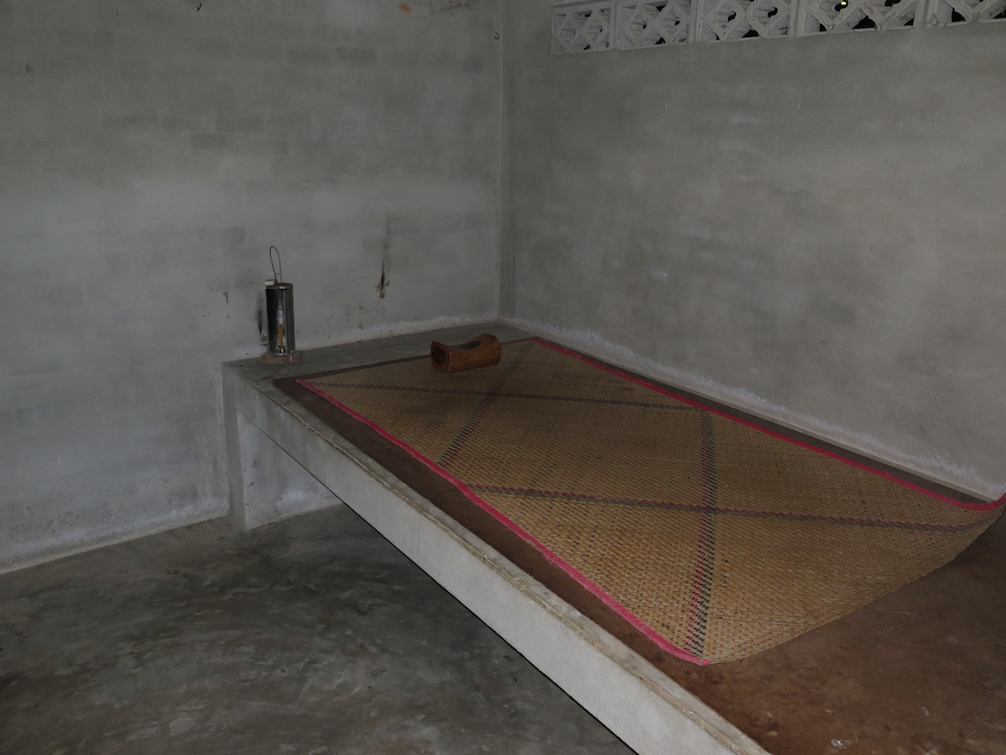
The rooms at Suan Mokkh might look like prison cells, but they’re surprisingly comfortable.
The beds at Suan Mokkh are concrete slabs with a bamboo mat on top, the pillows are made of wood, and the rooms make prison cells look luxurious.
It’s all designed to emulate the ascetic life of a Buddhist monk.
A lot of people struggled with the sleeping arrangement, but I found it to be quite manageable.
Usually, by the time the lights went out at 9.30pm I was exhausted and drifted off to sleep with relative ease.
Sure, I would have to rotate a few times during the night to give my bones a break from being pressed against cold, hard concrete.
But by the time the morning bell rung out at 4.00am, I usually felt well rested.
The wooden pillow was particularly comfortable, providing a firm cradle for my head.
The only way to cope with the lack of worldly comforts is by embracing the experience completely and laughing (rather than crying) at the seeming absurdity of it.
11. Silence is weird
Humans hate silence.
So much so that we call any pause in a conversation “awkward silence” rather than just, you know, silence.
We fill silence with ums and ahs and pointless questions. We play music in the car. We talk to ourselves.
Anything to avoid being left alone with our thoughts.
As I am quite introverted and can quite happily go a few days without talking to anyone, I thought I would find this aspect of the retreat quite easy.
And while I didn’t mind not talking, the experience of being silent for 10 days was unequivocally weird.
Just imagine waking up and resisting the urge to say “good morning” to your neighbour. Or when someone sneezes in the dining hall and no one pipes up with the obligatory “bless you”.
I made two minor slip ups in the 10 days. Once when I walked in someone else’s path, I said “sorry”.
The other was when one of the teachers was testing a microphone and asked if we could hear her. To my embarrassment, I said “yes”. I should have just nodded.
However, the thing that I struggled with the most was the total lack of connection with others.
I am someone who likes to look someone in the eye and smile when I pass them. But I found that a lot of people walked around looking at their feet.
This left me feeling quite flat.
Another thing worth noting is that the two times I was allowed to talk during the retreat (a one-on-one meeting with a teacher, and buying some laundry powder at the store) I whispered my words and felt overly emotional about the noise passing through my lips. Weird, huh?
12. You won’t go hungry
You will only eat two meals a day during the retreat. On day 8, we only ate breakfast. The food is vegetarian and highly nutritious.
For a lot of people, not having three meals plus snacks every day is a scary prospect.
But I can assure, it needn’t be.
Breakfast was at 8.30am. It was always rice stew with beans and vegetables, seasoned with garlic, herbs and spices, a selection of garden greens and fresh bananas, washed down with hot water.
I usually had a second serving of stew. Some had thirds.
Lunch was at 12.30pm. It was generally a smorgasbord of rice, vegetable stews, tofu curry, and other delicious, saucy concoctions.
There was dessert, too. You can eat as much as you like, but moderation is encouraged.
Buddhism isn’t really compatible with sensory indulgence. So each day we would be reminded to eat mindfully and to understand that food is for sustenance and not pleasure.
Despite all that, I always ate more than I needed, knowing that I wouldn’t eat again for about 20 hours.
In the evening, about 6pm, we had “tea” in the dining hall. It was rarely tea and usually hot chocolate or some other sweet hot drink.
It was one of my favourite times of the day. Having that hit of sugar helped to lift the spirits and carry me through the evening meditation sessions.
It was also enough to tide me over until 8.30am the next day, by which time I was usually starting to feel hungry.
12. Retreat crushes are a thing
I had started reading 10% Happier by Dan Harris (great book, by the way!) before the retreat. In it, Dan mentions that it’s common for people to be irrationally attracted to other people on the retreat.
This is known as a retreat crush. It’s a thing.
I know because it happened to me.
She was blonde and blue-eyed with a round face and glowing skin. And, if I’m honest, that’s about all I knew about her.
Retreat crushes are exacerbated by the fact that men and women have separate sleeping, eating, and meditating areas.
We only get to see one another from afar or in passing.
Then there’s the silence, which creates an air of mystery.
To top it all of, there’s a no sex rule on the retreat. And humans have a tendency to want what they can’t have.
All of these factors caused me to become unreasonably attracted to this woman.
But when the retreat ended, the desire dissipated and I didn’t even talk to her.
13. Meditation is simple
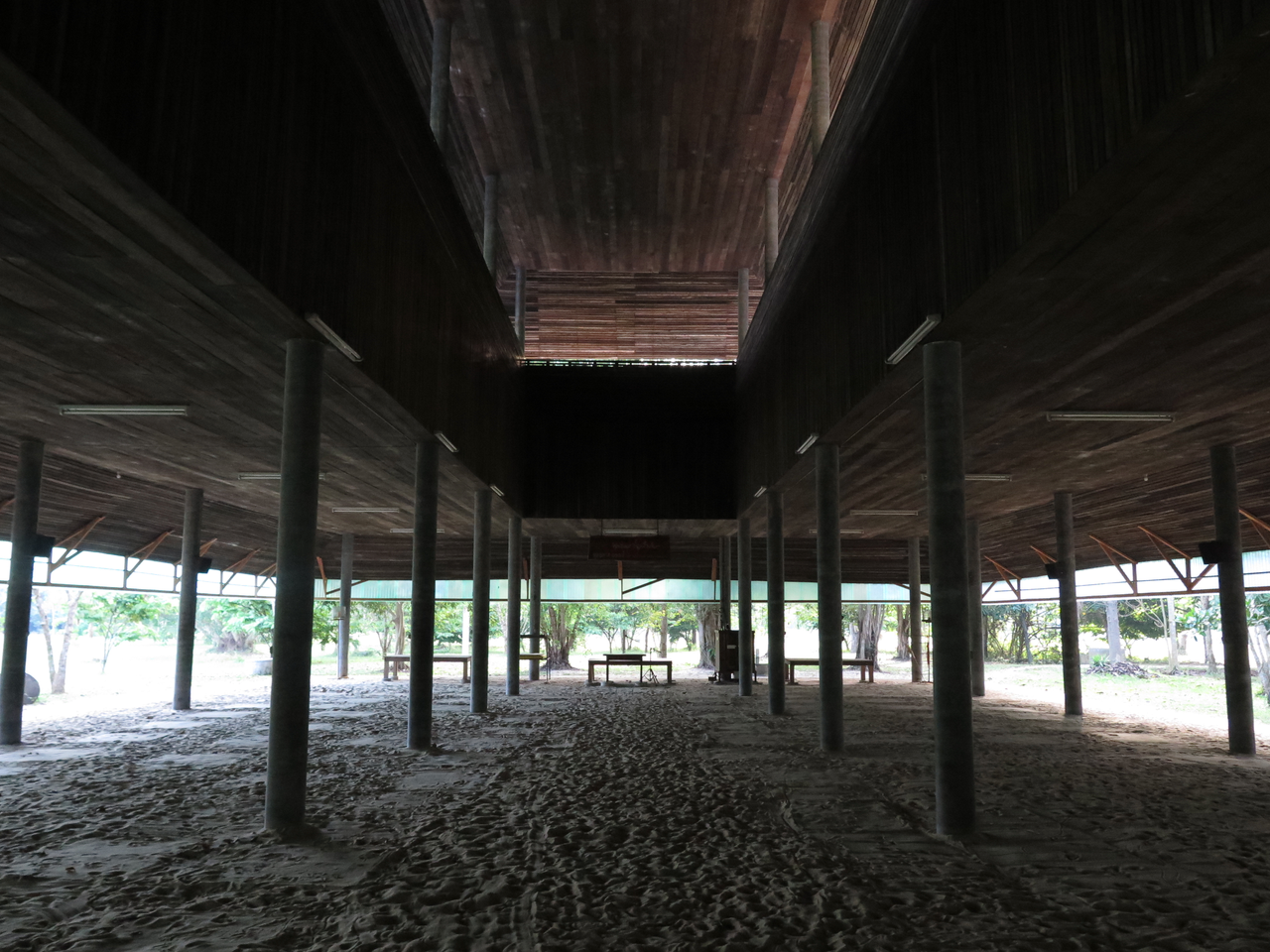
I had a lot of misconceptions about meditation when I started the retreat. Not least of which was the notion that meditation is complex.
I thought that meditation meant emptying your mind of thoughts, ascending to a heightened state of being, and achieving “enlightenment”.
It’s actually a lot simpler than that. Strip back the jargon and spirituality and meditation is essentially the act of paying attention.
Mindfulness with breathing meditation simply means paying attention to your mind (thoughts) and breath.
When thoughts arise (and they will arise), acknowledge them and let them go. Focus on each breath in and each breath out.
To begin with, it’s really that simple. If you can do that for one, five, 10, 20 minutes, you’re well on your way.
The practice of anapanasati does go deeper than that, but the fundamentals are simple.
It’s important to be forgiving of yourself. When you get distracted, gently bring yourself back to the breath and start again.
That’s what meditation is. Don’t overcomplicate it.
14. You will go deeper
Persisting with the fundamentals of meditation eventually leads to a deeper experience.
I’m not going to try and define what deeper means. It will be different for everyone and it’s important not to have an idea of something to strive for.
Practicing non-attachment and letting go is key to going deeper. Don’t meditate with any expectation of what meditation will do for you.
On the first few days of the retreat I was trying to achieve something through meditation.
It sounds ridiculous, but I was hoping to have an outer body experience or some kind of meditation-induced hallucination. These were things I had read about.
But through the teachings, and my daily practice, I learned to let go of these expectations.
Simply by paying attention to my mind and breath for hours each day I became more attuned to that state of being.
When people asked me what I got from the retreat, I told them that I now have easier access – a clearer pathway – to that inner state of calm.
It’s nothing especially profound. It’s just a tool that I’ve been able to develop through practice and will continue to develop with practice.
15. Buddhism is like Buzzfeed
I am not a religious person. I came to meditation via science and the psychological and physiological benefits of mindfulness.
I was also interested in how it might help with managing stress and improving brain function and creativity.
So I came to the retreat with a healthy dose of skepticism of the religious aspects of Buddhism.
I still attended all of the daily Dharma talks and was surprised to learn that, unlike other religions, Buddhist teachings were neatly arranged into numbered lists.
There are The Four Noble Truths; The Eightfold Path; The Three Pillars of Dharma; Four Foundations of Mindfulness.
The list goes on.
It reminded me of the news/entertainment website Buzzfeed with its “10 things you need to be super woke and enlightened” articles. You know the ones?
16. Walking meditation is a thing
I had seen walking meditation on the retreat schedule prior to arriving and assumed it involved strolling around the gardens while being mindful of the birds and the breeze.
It’s actually quite different.
Walking meditation is the practice of being mindful of walking.
It involves breaking walking down into precise movements: The lifting of the heel, and the raising, “going”, lowering, and placing of the foot.
Each step is excruciatingly slow. I think an outsider happening upon the retreat while 100 people were practicing walking meditation would be utterly terrifying.
It would look like a horde of sedated zombies.
You can mix it up with walking meditation. You can walk really fast, or walk backwards. The point is concentrating on the movement and how your body feels.
I also liked to concentrate on the sensations of different surfaces, such as dry leaves, gravel, grass, and cold concrete.
Each night, we would line up and walk around the grounds in the dark, following the rhythm of the person in front of you.
I enjoyed these sessions. It was a chance to stretch the legs between sitting and the grounds were incredibly peaceful at night.
Overall, I didn’t see much point in walking meditation and I haven’t continued the practice.
17. There is joy in service
I’ve never really experienced the pleasure of gift giving or voluntary work. I understand that that’s how some people express love, but it’s never given me warm fuzzies.
However, while cleaning toilets each day I challenged myself to have a positive attitude. But, I failed. I did the job willingly, but couldn’t bring myself to do it with a “happy heart”.
However, on the second to last day of the retreat all of the men were asked to help shovel a massive mound of dirt into an area that would become an organic vegetable garden.
In silence, we arranged systems and got to work in the afternoon heat. It felt good to do something active and work up a sweat.
It only took about 30 minutes to complete the job. Afterwards, one of the monks thanked us for our service and told us that we have contributed to something that will feed retreat participants in the future.
In that moment, my body was overcome with a deep sense of joy to the point that I felt like crying. It was a beautiful moment.
I can now say that there is joy in service.
18. Ego is the enemy
This is the title of a great book by Ryan Holiday. It’s also something to be especially aware of during a meditation retreat.
Ego is a complex concept, but at its most basic level it’s our self-image and self-identity. The ego is what hides between the “I” in beliefs and/or statements about oneself.
For example, “I am terrible at meditation” is a destructive belief put forward by the ego. It’s quite possible that the opposite may occur: “I am great at meditation. I am better at mediating than him/her.”
It’s common to have these ideas. They arise in almost every situation. They can become more prominent during a silent retreat with strangers as you tend to compare yourself to others a lot.
The ego will become more pronounced on retreat as you start to strip away the idea of the “self” (something I still don’t entirely understand).
In the same way that you pay attention to the thoughts that arise during meditation, try and observe the ego whenever it rears its head.
Don’t let it off the hook. Question what it says. Or even better, send it packing.
19. Don’t go on a retreat
When people ask me if I would recommend going on a meditation retreat, I usually say no, especially if they are early in their journey like I was.
It was incredibly intensive and challenging.
And while the retreat helped to fast-tack my meditation practice, I don’t think it was necessary to establish a regular practice.
Don’t get me wrong, it was a positive and memorable experience.
But I would recommend at least learning how to sit cross-legged comfortably before signing up for your first 10-day silent meditation retreat.
20. Go on a retreat
Don’t listen to me.
Go on a retreat.
If you’re curious about meditation and Buddhism, it’s a great way to immerse yourself in the practice and culture.
Suan Mokkh is set in a beautiful location. The retreat is well run and the teachers and volunteers are incredibly knowledgeable, gracious, and caring.
It will probably change your life for the better.
Further reading
The Ideal of Service in Buddhism
The Five Ego Traps To Avoid in Meditation
Thanks for reading!
If you have enjoyed this post or found it useful, please share it with your friends, family, and followers. This is the best way to help us reach more people and keep the lights on.

